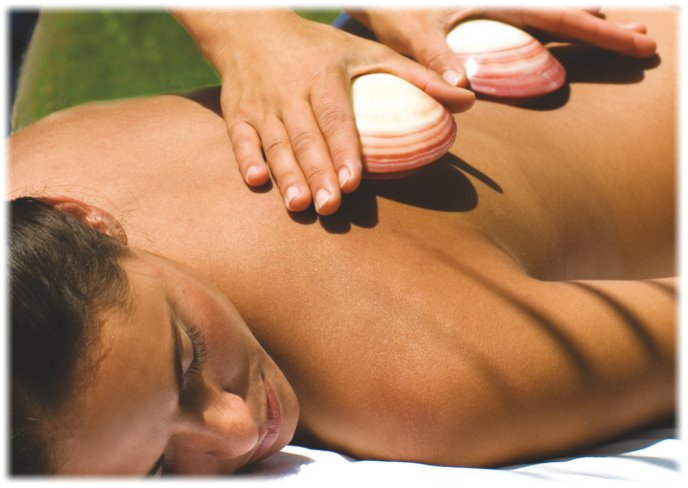Have you thought about getting a regular massage?
Tired, sore and stressed out?
Most people would agree a regular massage makes them feel good. But many probably don’t realize exactly how good a regular massage is for their overall health. How about if they knew regular massage could improve performance, aid, recovery, prevent and eliminate injuries, reduce stress and even enhance metabolism and circulation!
With so many alternative health treatments available it’s little wonder people get confused about where to go when they’re not feeling the best. But, while new health therapies continue to emerge, think about this the Chinese began using massage to heal the human body as long ago as 5,000BC and it’s still being used today. Now there has to be something to be said for that.
Massage Therapy for Health and Fitness
It may simply look like a lot of pressing and kneading on skin, but massage is actually a scientific process. The reason you feel different after a massage is because it is healing and invigorating tired, aching or injured muscles. Massage increases blood land lymph circulation. Lymph is a fluid that rids body tissues of waste, is dependent on the squeezing effect of muscles. An active person has better lymph flow than an inactive person. However, stimulation from vigorous activity can lead to increased waste, which can negate the benefit. This is where massage has a huge advantage. Massage can dramatically aid lymph movement, which together with blood, supplies nutrients and oxygen and rids wastes and toxins. It is easy to understand why good circulation is so important to our health and why regular massage can be so beneficial just for this purpose.
But Massage has so many other benefits:
- Increase the blood’s oxygen capacity by 10-15%
- Help loosen contracted, shortened muscles and stimulate weak, flaccid muscles. This muscle “balancing” can even help posture and promote more efficient movement;
- Speed recovery from exercise-induced fatigue;
- Increase production of gastric juices, saliva and urine;
- Increase excretion of nitrogen, inorganic phosphorus, and sodium chloride (salt). This suggests that the metabolic rate increases;
- Balance the nervous system by soothing or stimulating it, depending on which effect is needed;
- Improves function of the oil and sweat glands that lubricate, clean and cool the skin. Though, inflexible skin can become softer and more supple;
- Indirectly or directly stimulating nerves the supply internal organs can dilate the organs’ blood vessels, improving blood supply.
Massage and Sport
Massage plays a part in every form of sport or exercise. Unfortunately, many people believe aches and pains are an inevitable consequence to activity. But massage can actually reduce or eliminate what may appear to be exercise-induced pain.
It can increase endurance, control fatigue and help people feel better when used as part of a regular health program. Massage can also speed muscle recovery rates as it eliminates irritation from waste. By helping reduce fatigue and aid recovery, massage enables more productive training, with longer, more effective workouts. The ultimate spin-offs are better performance with fewer injuries. Exercise changes the way our muscles work. Blood vessels become more intricate as the body demands more oxygen and nutrients and increases waste elimination. This takes time. While the muscles are getting into shape, they can struggle to get enough oxygen and nutrients, so waste collects.
Massage and Injuries
Massage also helps recovery from soft tissue injuries such as sprains and strains. Tissue growth and repair is accelerated by efficient circulation and appropriate stimulation. Everybody experiences some form of stress through work, family, the environment and society. Mental tensions, frustrations, and insecurity cause the most damage. Hormones released by stress actually shrink the vessels, inhibiting circulation. A stressed mind and body means the heart works harder. Breathing becomes rapid and shallow and digestion slows. Nearly every body process is degraded. Studies show stress can cause migraines, hypertension (high blood pressure), depression, some peptic ulcers, etc. In fact, researchers have estimated 80% of disease is stress related. Soothing and relaxing massage therapy can counteract the effects of stress.
What Injuries can Massage Treat:
- Headaches & migraines
- Frozen shoulder
- Sore shoulder and neck
- Back pain & sciatica
- Tennis and golfers elbow
- Sprains, strains and tears
- Over-use injuries
- Shin splints
Increase the Benefits with Regular Visits
Getting a massage can do you a world of good. And getting a massage frequently can do even more. This is the beauty of bodywork. Taking part in this form of regularly scheduled self-care can play a huge part in how healthy you’ll be and how youthful you’ll remain with each passing year. Budgeting time and money for bodywork at consistent intervals is truly an investment in your health. And remember: just because massage feels like a pampering treat doesn’t mean it is any less therapeutic. Consider massage appointments a necessary piece of your health and wellness plan, and work with your therapist to establish a treatment schedule that best meets your needs.
Massage Benefits the Elderly
Massage knows no age limits. It works wonders on young, old, and in between. It can be especially helpful to the elderly who are experiencing the physical effects of aging which can include: thinner and drier skin, reduced tissue elasticity, loss of mobility, slower nervous system response, decreased bone mass, sleeplessness, constipation, and a less efficient immune system.
Massage helps keep the body and mind functioning optimally by promoting well nourished and healthy skin, improving circulation of blood and lymph, improving immune system functioning, improving energy flow, enhancing general relaxation, reducing muscular tension and associated discomfort, reducing anxiety, improving sleep, increasing feelings of well-being, enhancing flexibility and strength, increasing range of motion in joints, reducing discomfort from arthritis.
An article written for butlers body in balance

